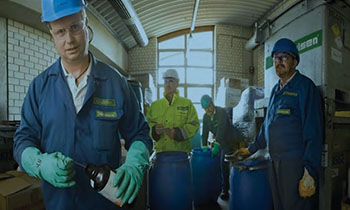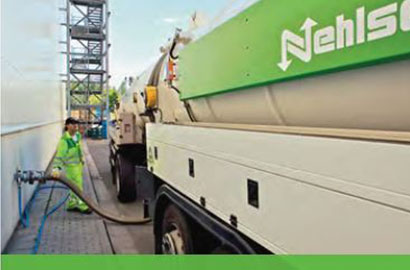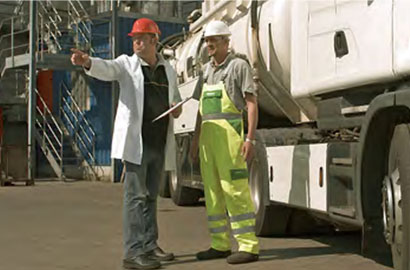- Open Hours: Mon-Fri 8:00 am-5:00 pm
- Email: info@nehlsenghanalimited.com
- Address: 26 Farrar Avenue, Adabraka, Accra-Ghana
Treatment of Hazardous Waste

Treatment of Hazardous Waste
Hazardous waste can easily become a danger to our health and the environment. We therefore collect waste, such as used oil and bilge water from ships, emulsions from the metalworking industry and old paints and their contaminated packaging material, to treat and recycle it appropriately. Such treatment plants render hazardous materials harmless and at the same time generate valuable products.


Chemical - Physical Treatment Plant
Chemical-physical treatment plants deal with liquid wastes. The various treatment techno logies enable the separation of oil and water, the cleaning of oil, the neutralisation of water and the dewatering of sludge. At the end of the processes, plant residues are either landfilled or treated thermally. Nehlsen operates plants of this kind in places such as Bremen (Germany) and Jradou (Tunisia). The Jradou treatment complex also includes a landfill site for hazardous waste.
Cryogenic Separation
To be able to re-use contaminated packaging, Nehlsen has developed a technology that can separate harmful residues, such as chemicals or oil, from raw materials like metal and plastic. The core process takes place at a temperature below -120 °C, rendering the contaminants brittle and ready for separation from the metal or plastic material. Our cryogenic plant can produce secondary raw materials with purity levels of up to 99%, which are traded under the product names of CryoTall (metals) and CryoPlast (plastics).
Work Process
Storage and Shredding
Shredding of the waste materials and then storage in area ready for the next stage.
Embrittling
The next stage is to make the shredded materials as tender and brittle as possible.
Cleaning
Cleaning is the next stage of the process.
Sorting
Shredding of the waste materials and then storage in area ready for the next stage.

